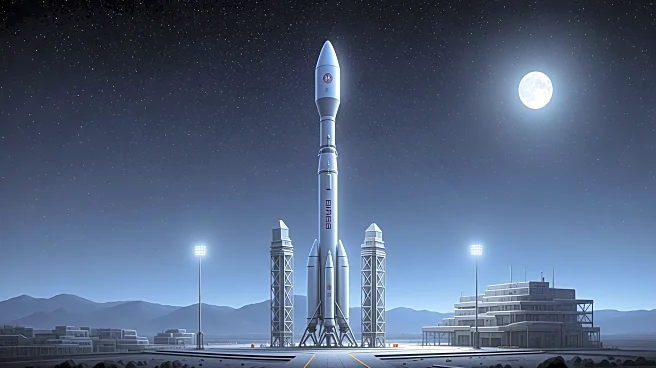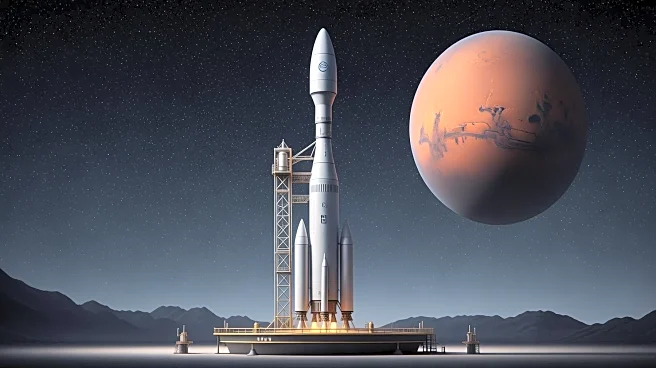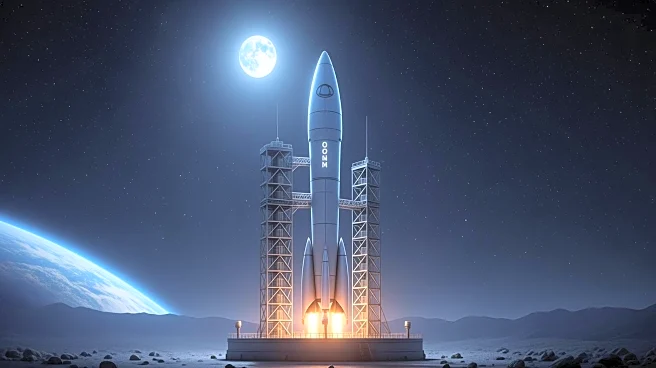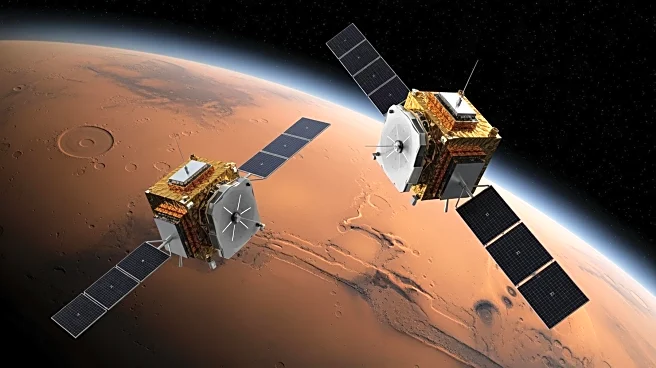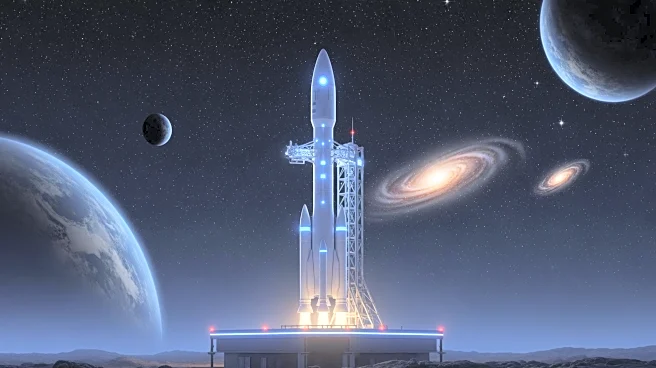What's Happening?
Blue Origin is set to launch NASA's ESCAPADE mission to Mars using its New Glenn rocket on November 9. The mission, named ESCAPADE (Escape and Plasma Acceleration and Dynamics Explorers), involves two spacecraft designed to study Mars' atmosphere. These
spacecraft, built by Rocket Lab, will be operated by the University of California, Berkeley. The launch will occur at Florida's Cape Canaveral Space Force Station, marking the second flight for the New Glenn rocket. The mission aims to reach the Earth-sun Lagrange Point 2, a stable gravitational spot, before heading to Mars. The spacecraft will study space weather and gather data on Mars' magnetic fields, upper atmosphere, and ionosphere, providing insights into the planet's atmospheric loss.
Why It's Important?
This mission represents a significant advancement in Mars exploration, as it is the first Mars mission in over five years. The data collected by the ESCAPADE probes will enhance scientific understanding of Mars' atmospheric conditions, which is crucial for future human exploration and potential settlement. The successful launch and operation of the New Glenn rocket also demonstrate Blue Origin's growing capabilities in space exploration, potentially increasing competition in the aerospace industry. The mission's findings could influence future Mars missions and contribute to the broader goals of understanding planetary atmospheres and space weather.
What's Next?
Following the launch, the ESCAPADE spacecraft will spend 12 months at the Earth-sun Lagrange Point 2 before heading to Mars, which they are expected to reach in late 2026. Upon arrival, the probes will spend seven months adjusting their orbits to gather data for at least 11 months. Blue Origin will attempt to land the New Glenn's first stage on a ship at sea, a maneuver that failed during its previous test flight. Success in this attempt could mark a milestone in reusable rocket technology, impacting future space missions and reducing costs.
Beyond the Headlines
The ESCAPADE mission could have long-term implications for understanding Mars' habitability and the potential for human colonization. By mapping Mars' magnetic fields and atmosphere, scientists can better assess the planet's ability to support life and the challenges of sustaining human presence. The mission also highlights the collaboration between private companies and academic institutions in advancing space exploration, potentially setting a precedent for future partnerships.
